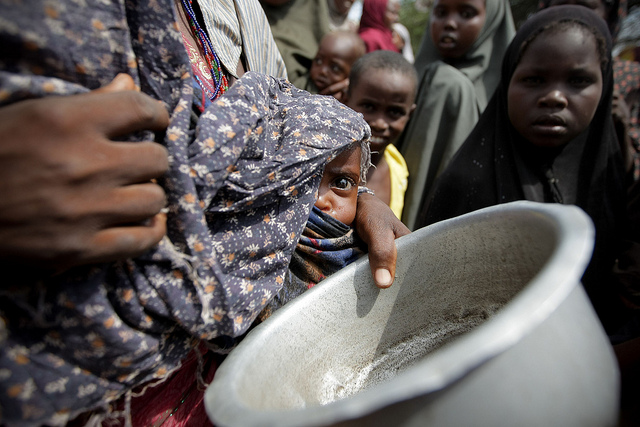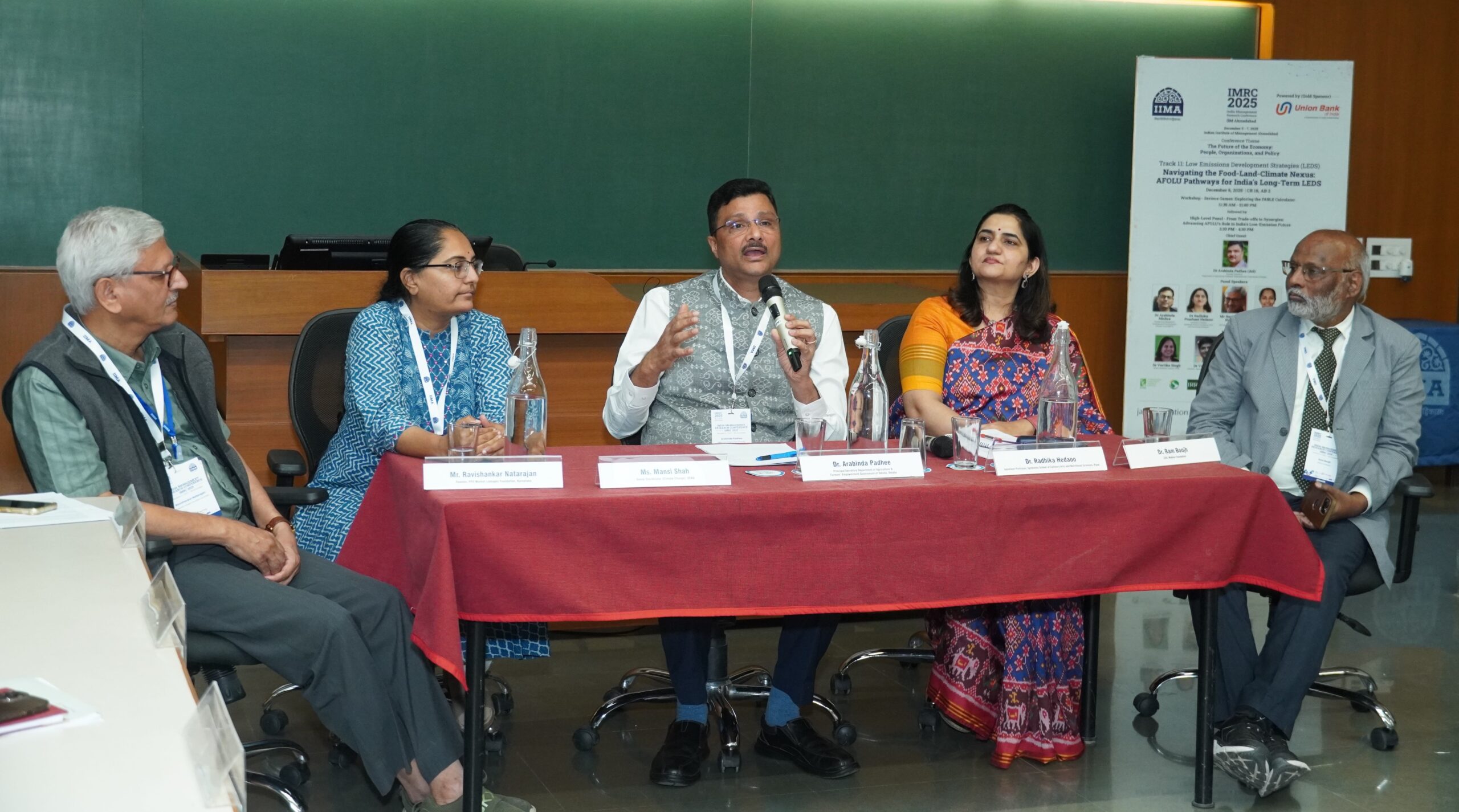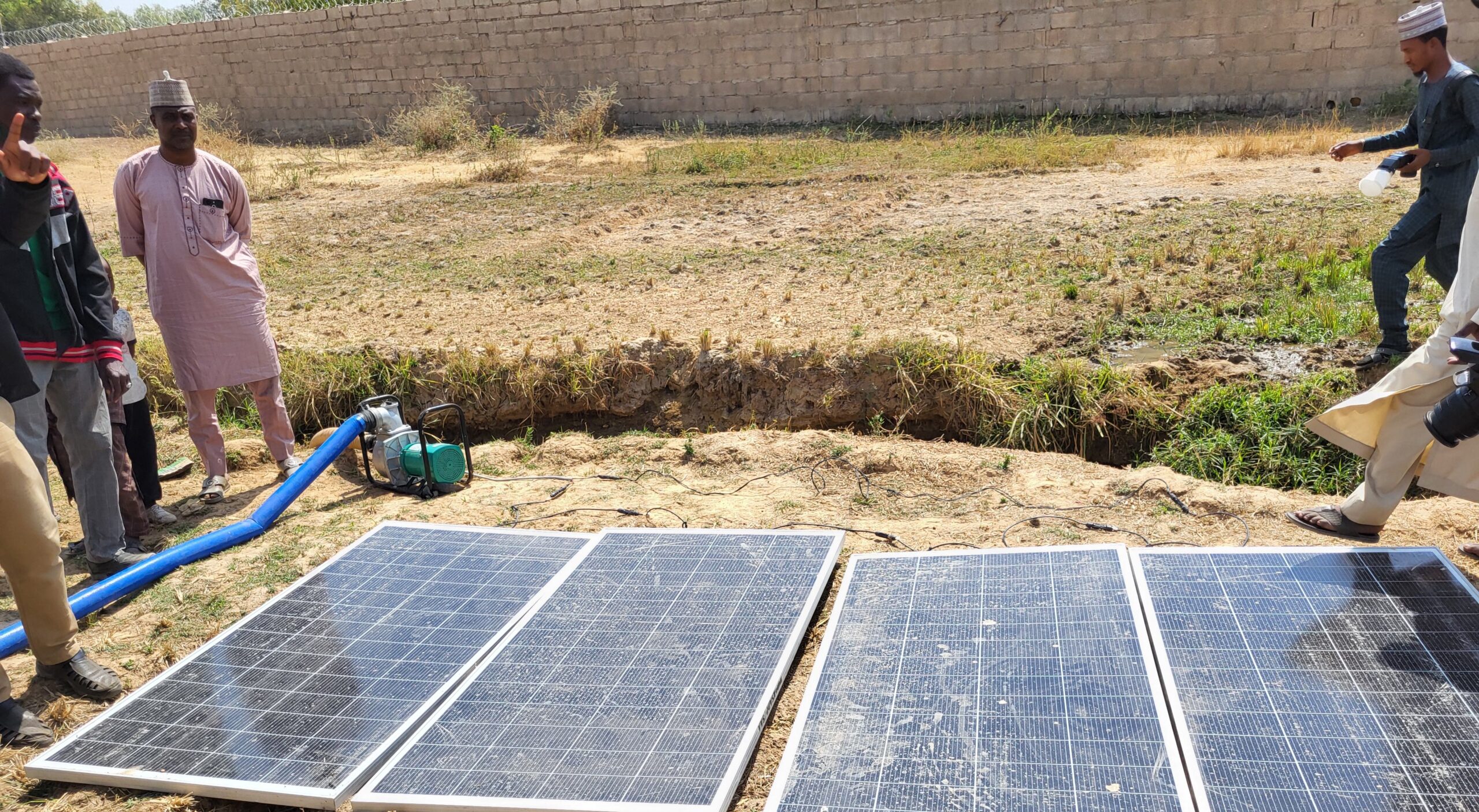A month after the United Nations called for $4.4 billion for famine prevention, only 10 percent of the needed funds have been mobilized to help 20 million people on the verge of starvation and death in Nigeria, Somalia, South Sudan, and Yemen. Agencies implementing emergency operations are scrambling for resources.
Unfortunately, the real tragedy is not just the looming threat of another famine, but the collective amnesia of the important lessons gleaned from past disasters, which leaves institutions unprepared for the next round of droughts and famines. When the threat of famine subsides with the first sign of rain, the policymakers, NGOs, the public in affected countries, and development partners who were concerned about saving lives slide back to lethargy and complacency. Many return to whatever they were doing before famine struck—running projects, fighting local political adversaries, etc.—instead of doing the work needed to avert or mitigate the next famine threat. So with each famine, we start all over again. We have seen these “famine cycles” for the past 40 years. Why does this happen, and what can we do differently this time to break the cycle?
Current situation
Humanitarian agencies warn that current conditions could lead to one of the worst disasters in recent memory. In February, early warning systems indicated significant humanitarian aid would be needed for 20 million people in the four severely affected countries. In contrast, 11 million were affected in the last major famine in Horn of Africa in 2011; the famine of southern Africa in 2003-2004 threatened 14 million.
Current relief efforts are not nearly sufficient to meet the needs of affected populations. Ongoing conflicts in all four countries make it more difficult for agencies to deliver aid, and have weakened residents’ traditional coping strategies. Pre-famine conditions were already dire: For example, in South Sudan, 31 percent of children under five were stunted (low height for age) in 2014; 23 percent were wasted (low weight per height) even before this crisis, and the recent drought and civil war have only exacerbated the problem. In general, conflict zones are more vulnerable to famines because they disrupt food systems and divert resources away from the long-term investments required to build food security.
Such problems may appear intractable. But in fact, countries such as Ethiopia that have followed right policy paths in the last 20 years have avoided famines even under severe droughts. This suggests that, with the right combination of investments and policies, over time the threat of famine can be significantly reduced.
What causes famines?
Famines are the product not only of nature—insufficient rains leading to a failure to produce adequate food and sustain livestock—but of man-made causes, especially a breakdown in the social systems that produce, distribute, and manage food. Long-term climate change (itself a confluence of natural and human effects) is a contributing factor to the occurrence of drought that also impairs the functioning of food systems. Wars and other conflicts drive the rich to migrate to safe zones, leaving the poor and the vulnerable behind, and eroding the ability of communities to cope up with the drought-induced food shortages. These areas also face land degradation, deforestation, and associated environmental damage, compounding the low productivity of their food systems.
Thus, low food system productivity, weak markets, poorly governed institutions, the lack of basic infrastructure, and continued political conflicts have exacerbated droughts into famines.
What have we learned?
The last 40 years of famine response and prevention efforts offer several key lessons for tackling the current, looming debacle. The Ethiopia famine in 1970-71 showed that even if a country has an adequate food supply, the inability to move food from regions of abundance to regions suffering food deficits due to poor infrastructure and conflict can cause famine-like conditions (see, for example, Amartya Sen’s Poverty and Famines). The famines of Ethiopia and Sudan in 1983-84 taught us that recurring famines can undermine the resource base of poor households and reduce their ability to cope even in the absence of disaster. Thus, eliminating the recurrent threats of famines and building coping capacity largely depends on long-term efforts to reduce poverty and food insecurity.
Frequent droughts and famine-like conditions in southern Africa during early 1990s showed unless local decentralized institutional and human capacity is built to forewarn, plan for, and manage disasters, famine prevention will not be effective. The devastating droughts of early 2000s in southern Africa further showed that countries that have organized capacity for collecting, analyzing, and designing interventions can manage impending disasters better than others. The food crisis of 2007-08 demonstrated that countries need stronger assessment, monitoring, and surveillance systems to minimize the risk and mitigate the effects of food crises on the vulnerable. The Horn of Africa famine in 2011-12 showed that countries face recurrent famine-like conditions due to low levels of resilience in their food systems, and that building resilience requires a transformation of the food system. Finally, the examples of Ethiopia and Bangladesh over the last two to three decades demonstrate that sustained investment in agricultural research, extension, and rural infrastructure, combined with improved social safety nets, can increase food system resilience—and that of communities against droughts and famine-like conditions.
What needs to be done?
Averting future famines and building long-term food security require a paradigm shift, a strategy that goes beyond proverbial relief and development dilemma. In short, local communities must develop food systems with high-level resilience. In the meantime, traditional approaches to managing the famine must be deployed. Here is a set of strategies for famine prevention in conflict zones for the immediate, short, medium and the long run:
- Humanitarian aid. To address the immediate crisis, begin with general food distributions, followed by targeted food aid, along with the provision of heath care, clean drinking water, and sanitation. This should be followed quickly with supply of modern inputs and health care to aid vulnerable groups, in order to prevent epidemics and reduce the movement of people in search of food. Humanitarian organizations must also weigh whether to give direct food aid or cash assistance, depending on the country and community contexts. Delivery of food to affected populations has high transaction costs, but in places where food markets do not exist or function well, cash payments may be a less effective means to save lives.
- Rebuild communities. While food or cash assistance is a good beginning, quick follow-up with communities that are starting to rebuild and relatively safe from violent conflict is essential. Rebuilding typically involves invigorating local economies through safety net programs such as public works—for example, employing abled-bodied individuals to construct irrigation systems, feeder roads, and other essential infrastructure. There is always the danger of a relapse into conflict and the loss of these rebuilt structures, but this is an important step towards helping the affected population to return to normal lives. Restoring food production through the distribution of inputs such as fertilizer and high-quality seeds is also an important short-term goal.
- Strengthen local food system resilience. As rebuilding takes hold, communities must begin to stand on their own feet; this depends on efforts to build resilient food systems. Below are the pathways for rebuilding resilient food systems in conflict zones:
Organizations must identify and work to strengthen all the factors that contribute to resilience, shifting their focus from just “relief to development” to “relief to resilience.” Food systems that have high resilience are likely to be self-sustaining in the long run—even under conflict conditions.1 For example, strengthening resilience requires providing communities appropriate, up-to-date crop technologies, making sure those are adopted, and strengthening institutional support for research, agricultural extension services, and policy making.
- Focus on long-term economic strategies. Finally, development assistance should aim to foster economic diversification and otherwise expand employment opportunities. This will help ensure food security, especially when combined with investments in microcredit programs, market development, and long-term agricultural research. For example, famine recovery efforts from other parts of Africa have shown that farmers’ per capita income could be improved with only incremental expansions of smallholder production systems. In Ethiopia, for example, expansion of agricultural extension services, and provision of modern inputs increased agricultural production. Such investments, along with complementary investments such as rural roads, are likely to have high payoffs, particularly for highly resilient food systems. Such strategic approaches can yield major gains in food security, nutrition, and poverty reduction, and can have spillover effects, including rural employment growth and reduced food costs. Following food policies that build institutions and strengthen communities can put productive social safety nets in place that reduce vulnerability to famines in the long run.
What comes next
What does this mean today for development partners operating in the affected countries under conditions of scarce resources? In all four famine-affected countries, populations live under precarious conditions, victimized by conflict. They face the loss of their property and livelihoods, and of the ability to cope with entitlement erosion. Some opt to leave. Outmigration of farmers results in desertion of cultivable land even during years of normal rainfall, degrading agricultural production systems and overall food system resilience.
Clearly, the challenges are daunting. But building resilient food systems is a long-term process. History shows it depends on the sustained commitment of national governments to rural development and food security. It will also depend on putting an end to the armed conflicts in the affected countries. The interventions suggested above for different time frames are complementary. They involve integrated approaches employed in many sectors—agriculture, health, nutrition, public works, and rural development. These interventions should be carefully designed, implemented, and monitored to gauge how they fit into the relief-resilience-development continuum. Ultimately, though, bouncing back from the current crisis and building better-governed, famine-resistant communities will depend on a sustained commitment from policy makers, development partners, and the affected communities themselves.
Suresh Babu is a Senior Research Fellow and Head of Capacity Strengthening at IFPRI; Paul Dorosh is the Director of the Development Strategy and Governance Division at IFPRI.
1. Pathmanathan, H., S.C. Babu, and C. Pal, 2017. “Building Resilience for Food Systems in Post-War Communities: Case Study and Lessons from Northern Sri Lanka.” IFPRI Discussion Paper (forthcoming).







